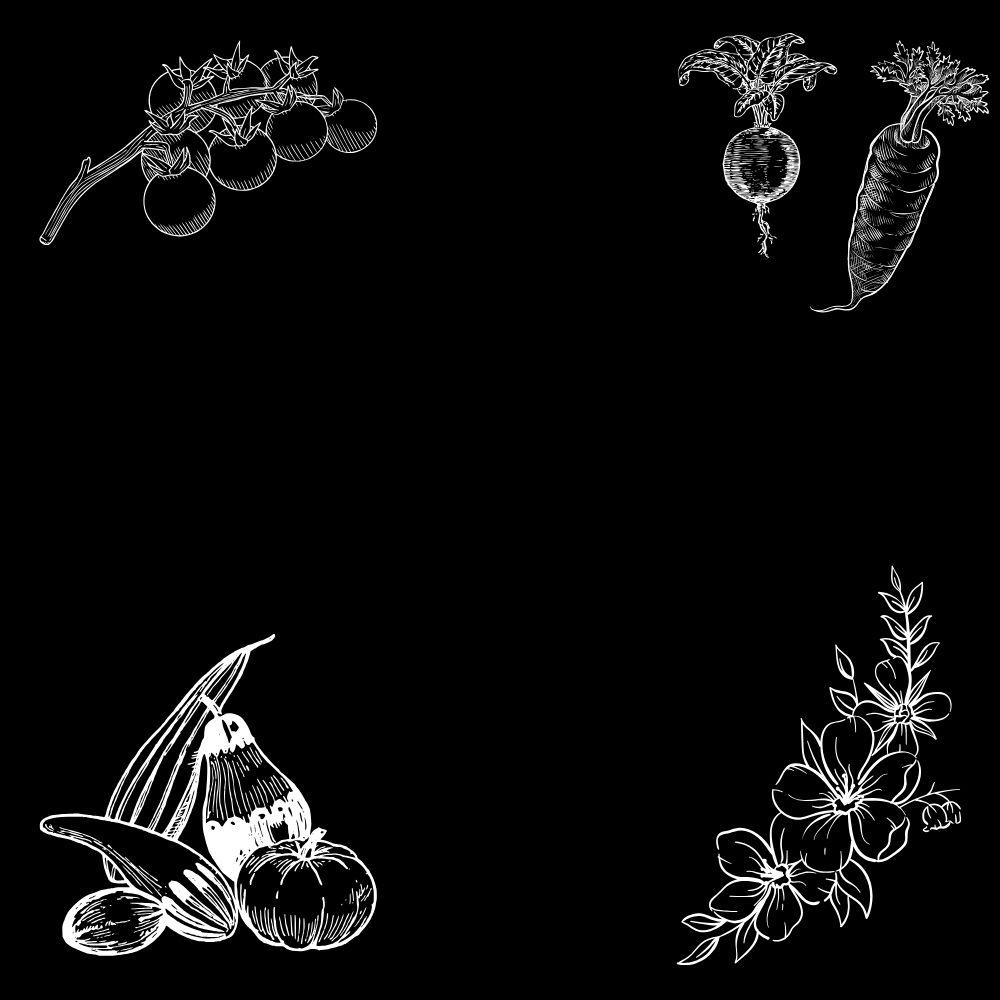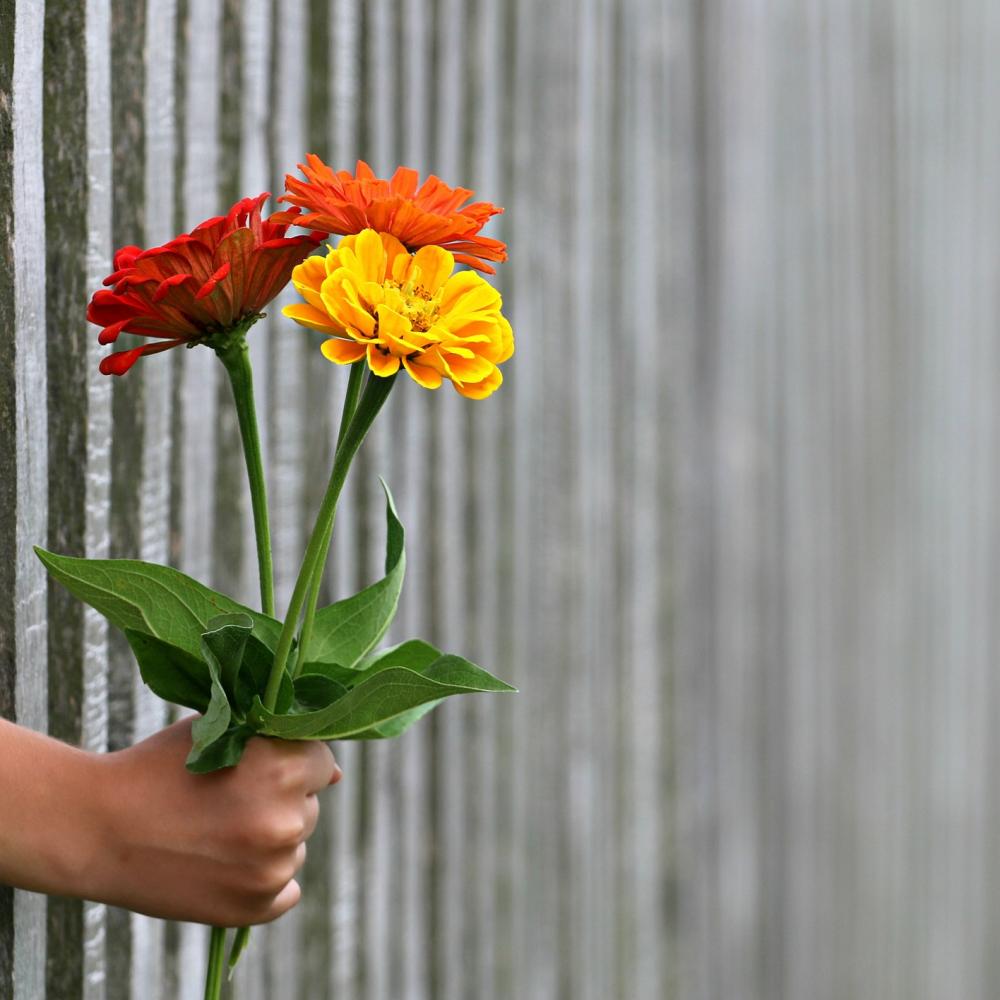
January Allotment Jobs
January Allotment Tips
- Start chitting your potato seeds
- Prepare allotment soil and beds, mulch.
- Any structural building, cleaning and clearing
What to grow in January
- Sow broad beans in mild areas
- Plant fruit trees if the ground is not frozen
- Sow early crops - salad leaves, brassicas such as lettuce, cauliflower, cabbages and spring onions
As we welcome the New Year, many of us are eager to get back out on the allotment. However, at this time of the year, there are limits to what we can achieve. The ground is often too wet or frozen to dig, and with fewer daylight hours, it can be tricky to get much done outside.
Having said that, there’s always something useful to keep us busy!
Cold and rainy days are perfect for planning ahead! You can start to think about what you want to grow and map out when you’ll sow, harvest and where each crop will be planted. Take the time to read up on the best practices and tips for a great season ahead.
What’s Possible in January – Allotment Overview
January is one of the colder months of the year, with temperatures ranging from -1°C to 5°C in the north and a little milder in the south at around 5°C and 6°C.
As an allotment grower, you may find yourself asking questions like “what to grow in January” or “what bulbs to plant in January?”
Although outdoor activity is limited, there’s still plenty happening in the background. With some careful planning, you can be ready for when the weather warms and the frost disappears, so you can get planting, growing and harvesting plenty of crops.
As we start the New Year, we’re often eager to get back to work on the allotment, but the ground is often too wet or frozen to dig, and shorter daylight hours reduce the amount we can achieve. Having said that, we can always find something to do!
You can start the year by clearing away any damaged and rotten veg still in the ground, while continuing to harvest winter staples such as sprouts, parsnips, cabbage, and leeks, checking them for any damage.
Depending on the microclimate in your area, you can plant microgreens and forced bulbs of Hyacinth, Daffodils, and Tulips indoors. You can also get a head start on spring-summer crops by planting them under cover in January itself, which includes salad leaves, baby carrots, and herbs.
Late January is also the perfect time to begin chitting potatoes. Place seed potatoes with the eyes facing upwards, in a sectioned tray or egg box and leave in a light and cool place indoors. After 4-6 weeks, once the shoots reach around 2cm, they’ll be ready to plant outside. Don’t forget to label them if you have different varieties!
If you’re wondering what vegetables to plant in winter outdoors, you can start with garlic, onion, shallots, broad beans, lettuce, cabbage and cauliflowers and bare-root fruit trees such as apple, pear, plum and cherries. To give young plants the best chance, use protection such as cold frames, greenhouses or horticultural cloches. Alternatively, you can start plants in containers before planting them in the soil once the weather begins to warm.
January Allotment Jobs Checklist
For many first-time gardeners, January can feel like the least productive month on the allotment. In reality, there’s still plenty to be done, January is the perfect time to prepare for the season ahead, making sure you’re ready when the frost passes and the temperature begins to warm.
Rather than just wondering what veg you can grow in January, here’s a list of jobs to keep your allotment productive.
Order Seeds and Supplies
We all love a trip to the local garden centre! If you haven’t already saved seeds or don’t have any left in date, why not pick some up while you're there? You may also need more propagators or seed trays, and let’s be honest, can we ever really have too many of those!
It’s also worth looking out for good-quality plug plants that you can sow at the end of February or March, depending on your local weather conditions. You can also stock up on other supplies such as fertilisers or tools. As it is the off-season, you may even get a better discount or rate.
If you’re planning to sow onions or garlic during January, it’s always best to buy seeds from your local nursery rather than bulbs from the supermarket. Store-bought bulbs are often imported and will not withstand the UK weather conditions.
Check Overwintered Crops for Frost Damage
Some common overwintering crops in the UK include Kale, brassicas, onions and root vegetables. January is the best time to check on your overwintering crops for frost damage. Check the leaves, shoots, crowns and roots for signs of damage. The best way to check is to dig up a sample plant and check it for signs of frost injury.
Some crops that are ready for harvest include leeks, Brussels sprouts, Jerusalem artichokes and other overwintering varieties.
Conduct General Allotment Maintenance
January is a great time to catch up on general allotment maintenance. Of course, you do not HAVE to do this in January, and you may not be able to even access your allotment plot, but it is great to get ahead if the conditions allow and you have the time to.
You might be thinking of replacing your shed or simply freshening up the one you have. A fresh lick of paint or varnish (if it's dry enough) and a good old sort out inside will set you up nicely for the new season. Check for any leaks, damaged guttering, or broken latches and fix them while you have the time.
The same applies to greenhouses and polytunnels. Give them a good clean inside and outside to remove mould, mildew, and dirt that may have built up. This will ensure your seedlings get the best possible start in the spring.
You could also top up paths with bark or stones, or even lay new ones if the weather allows. Finally, don’t forget your compost area, tidy up the heap and repair or replace bins if needed (many use pallets to contain their compost heaps).
Prepare the Soil for Spring Sowing
January is a good time to begin preparing your soil and beds ready for the year ahead. Adding a good layer of manure or high-quality organic compost now will give it time to break down and enrich the soil before spring sowing. If you’re interested in trying the No-Dig method, this is also the perfect time to set up a new bed.
There’s still time to prune fruit trees too, before growth begins again. You may also be tempted to start sowing indoors. For many crops, January can be too early, depending on your location and the weather. Some varieties will cope well inside or under glass/polythene or in a heated propagator, but in general it’s best to wait until February, particularly if it’s a cold winter.
Mulch and Compost
Recycle any old compost and get started on mulch. Collect kitchen scraps (green waste) and balance them with brown waste (dead leaves, cardboard and paper scraps). To help the process along, turn the heap regularly to improve aeration and speed up decomposition, also cover your compost with tarpaulin to keep it warm and moist. Remember not to compact wet and frozen soil when working around your beds.
If you already have a compost bin, now’s also the time to check for signs of pests such as rodents and squirrels, which often take shelter there during the winter.
January Calendar for Allotment Growers
January 1st-10th: Clean and sharpen tools
January 11th-20th: Sow under cover
January 21st-31st: Prune dormant shrubs
What to Sow Now vs What to Plant Now
Have you ever thought about what to grow in the winter? Here are some plants that can be sown in January, under cover and indoors, as the conditions outside are too harsh for germination:
- Broad beans
- Chillies and Peppers
- Aubergines
- Tomatoes
- Salad leaves
- Herbs such as basil, parsley and coriander
You can use a cold frame, a heated propagator, a grow light or even a warm sunny window.
Here are plants that can be planted in January in areas where the soil isn’t frozen or wet:
- Garlic
- Onion and Shallot
- Bare-root fruits like pears, apples, and raspberries
- Rhubarb
- Strawberry
It’s important to harden them off before planting them in their final position and use horticulture cloches and fleece during the night for protection.
Growing in Containers or Small Spaces and Indoors
At Allotment Online, we are aware of the long waitlist on the council-approved allotments, but that doesn’t mean you can’t enjoy the thrill of growing. Even in January, there are plenty of container-growing plants you can grow.
Here are some great plants to try this month:
- Herbs such as coriander and chives can be grown in troughs or small containers on a sunny kitchen windowsill.
- Salad leaves like lettuce and winter mixes can be grown in window boxes.
- Herbs like rosemary and thyme can be grown in a container kept outside but protected at night with a fleece.
- Winter spinach grows happily in pots with the right care.
It is a common misconception that flowers only appear in spring, but many flowering plants bloom in the cold when kept indoors. If you’re wondering what flowers grow in winter, try:
You can plant these flowers indoors in containers:
- Hellebores
- Winter pansies and violas
- Heathers and dwarf conifers
Precautions for Container and Indoor Growing in January
- Keep the containers raised or move them frequently to ensure proper drainage and prevent waterlogging
- Keep an eye on soil moisture content
- Cover plants with fleece or a cloche at night or on very cold days
- Keep the containers in an area that receives maximum sunlight and warmth during the day
Your January Grow-Your-Own Starter Kit
The new year brings fresh opportunities, a chance to start with a clean slate, especially for an allotment grower. Whether you have resolved to spend more time outdoors or grow more produce than the previous year, our Grow-Your-Own Starter Kit will be your best friend that’ll help you stick to your New Year's resolution without giving it a raincheck.
Here’s everything you will need to get started from January itself and not wait (lest you forget your resolve):
- Procure seeds for spring sowing
- Plant any hardy plants indoors, undercover or outdoors (weather permitting)
- Keep an adequate quantity of seed trays, horticulture fleece and cloches, and containers
- Start composting and mulching
- You can also buy cold frames or a grow light (only for serious growers)
- Test the pH of your soil and create no-dig beds
- Create a plan for crop rotation and companion planting
- Allocate space for cover crops to be planted later
Common Problems and How to Avoid Them
When thinking about what vegetables grow in January, it’s just as important to consider the challenges you might face and how to prevent them. Don’t worry, we’ve outlined the key problems and solutions to help keep your January growing on track.
Frost and Cold Damage
Low temperatures can stunt growth or kill tender plants. Protect crops with fleece, cloches, or polytunnels, and stick to hardy winter varieties. Always harden off plants before moving them outside.
Lack of Sunlight
Short days and weak light can make it harder for plants to take in nutrients. Place containers in the sunniest spot you can, move them if needed, and enrich soil with multi-purpose compost or a good liquid feed.
Cold Winds
Harsh winter winds can damage or even uproot young plants. Shelter crops with windbreaks, canes, or by choosing indoor/container growing.
Waterlogging
Heavy rain, frost, and melting snow often lead to soggy soil and root rot. Prioritise raised beds or container growing in January, and ensure good drainage.
Pests
Slugs, snails, and pest larvae thrive in damp conditions, and rodents can be a problem too. Regularly check your crops, use barriers or organic deterrents, and keep plots tidy to reduce hiding spots.
Old or Out-of-Date Seeds
Using leftover seed packets may be tempting, but germination rates are often poor. For the best results, use fresh seeds from a garden centre or nursery.
Planting in Frozen Soil
Never plant directly into frozen ground. In colder areas, wait until the soil has thawed to avoid root damage and poor establishment.
Tools & Techniques for January Success
When you think of what veg to grow in January, you must also consider whether you are ready with all the right tools for a successful growing/sowing season.
- Hand trowel and rake
- Garden spade
- Dibber
- Pruning shears
- Wheelbarrow
- Waterproof boots and clothing
- Gardening gloves
- Horticulture fleece and cloches
- Cold frames
- Container and seed trays of varying sizes
Start Your Allotment Growing Journey and Share Your Experience with the Community
Allotment growing can be a therapeutic and invigorating experience. At Allotment Online, we are always here to share our knowledge about growing vegetables, fruits, herbs and nuts with our community. Do you have a story you want to share about your growing experience? Share your stories, photos and advice with us in our comments and socials.
Our website offers a treasure trove of valuable tips and strategies for both amateur and experienced growers. If you are excited to start on your allotment journey, you can check our directory for the nearest allotment association near you.




